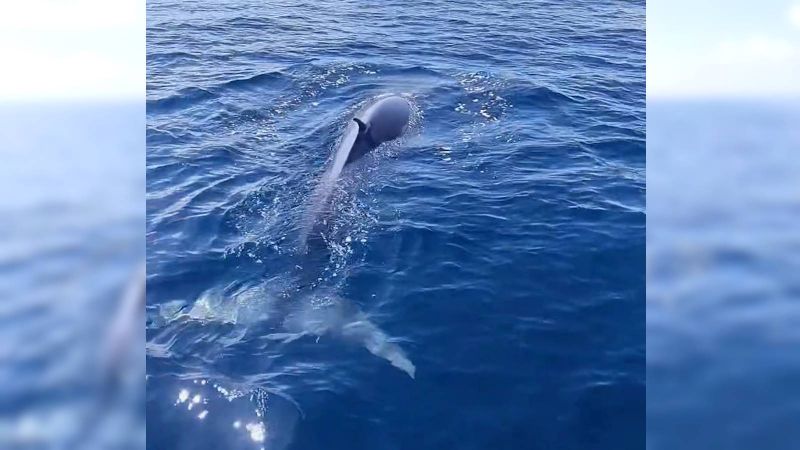National park officers at the Mu Ko Surin National Park confirmed the sighting, of an Omura’s whale, in the Surin Islands archipelago with a post online on Thursday (Oct 26).
The post showed a video of the whale surfacing, with excited cheers of “Sut Yoht!” (“Fantastic!”) by the Thai crew on board the boat. (See video here.)
Park officers confirmed it was the first time that an Omura’s whale had been sighted in the park’s waters.
The Omura’s whale (Balaenoptera omurai) is similar to the Bryde’s whale (Balaenoptera edeni brydei), and is protected in Thailand, the park officers explained in the post.
They grow to 20 metres long, weighing up to 20 tonnes. Omura’s whales are found alone or in pairs, but may group together for feeding. The whales have been seen “lunge feeding” on krill and small fish.
Omura’s whales are found in tropical to warm regions, in both offshore and coastal zones. Most are found in the eastern part of the Indian Ocean and the western Pacific Ocean.
However, Omura’s whales have been confirmed as seen in Thai waters, from Prachuap Khiri Khan to Songkhla in the Gulf of Thailand, and they have been seen along the Andaman coast. A group of four have been previously photographed near the Racha islands, south of Phuket.
The Omura’s whale was first described by three Japanese scientists, Shiro Wada, Masayuki Oishi and Tadasu K. Yamada, in 2003, and named in honour of Japanese cetologist Hideo Omura, who passed away in 1993, the park officers explained.
However, Shiro et al had first recognised Omura’s whales only from dead specimens in 2003. It was not until 2015 that the first specimens were recognised alive in the wild. The International Union for Conservation of Nature (IUCN) does not even have enough data to determine whether Omura’s whales are endangered.
Omura’s whales had previously been mistaken for Bryde’s whales as both species look similar. Scientists now know that Omura’s whales are not related to the Bryde’s whale at all.
The dorsal fin of the Omura’s whale is similar to that of a Bryde’s whale, but is more curved and located more towards the tail. Also the head of an Omura’s whale has one convex ridge. Bryde’s whales have three.
The body of an Omura’s whale is a light-coloured grey-black, and they may have a whitish to pink belly. They also have 80-90 light-coloured grooves under the chin, extending past the navel.
The left side of the jaw is black, but the right side is faded or white. The jaw is filled with 180-210 pairs of short and wide teeth that are white, yellow or black.








